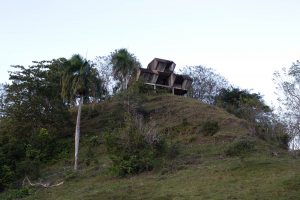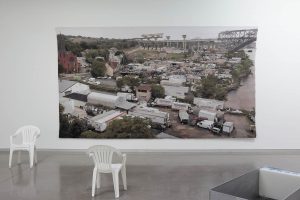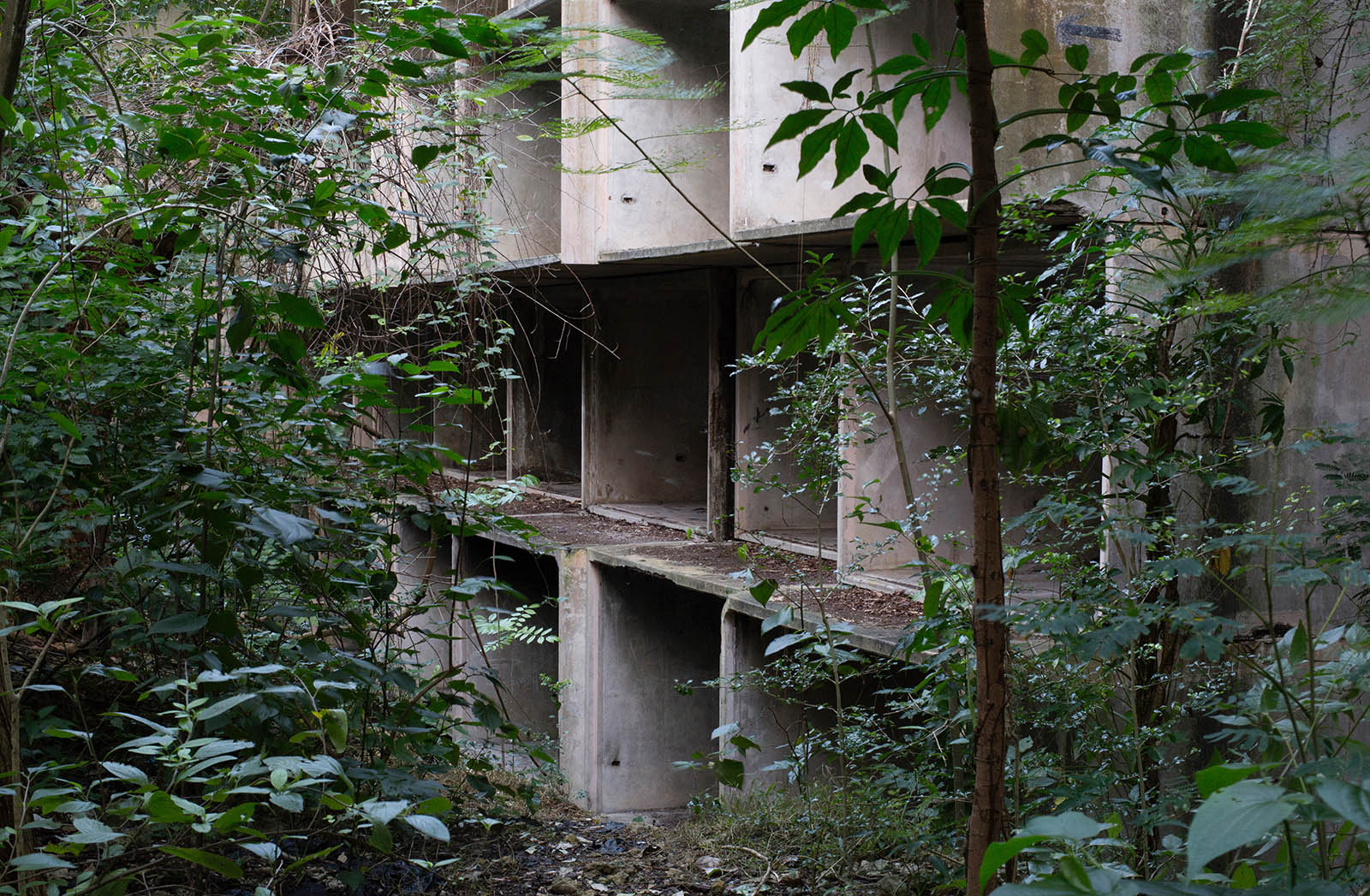Montreal-born artist David Hartt uses the built environment as a tool for exploring pivotal moments, ideas and movements in history, and in doing so raises questions about postcolonial nation-building, racial identity and the ideologies that shape planning policy. In his recent work he has turned his camera on modernist ruins in Puerto Rico, the offices of an era-defining business in Chicago, and the relationship between the urban plans of Athens and Detroit. Currently assistant professor in the Department of Fine Arts at the University of Pennsylvania, Hartt has held exhibitions at the Graham Foundation, the Art Institute of Chicago, the Museum of Modern Art and the Whitney Museum of American Art. Ahead of his talk at Harvard’s Graduate School of Design, he outlines the thinking behind some of his most notable works, explaining how complex ideas are contained within these controlled glimpses of the physical environment.
Why did you choose to call your lecture “Urban Futures of the Recent Past,” the subtitle of Reyner Banham’s 1976 book, Megastructure?
I love the irony in Banham’s title. The text is a critique of a book by Justus Dahinden called Urban Structures for the Future, which is a celebration of mega-structures–vast projects like the Grands Projets in France, New Towns in Britain and those surrounding Olympics or World’s Fairs. There was an incredible optimism surrounding these projects, but they took a perverse turn in the 1970s when private developments adopted the strategies of state projects, in terms of claiming space and taking on a scale completely disproportionate to the cities they were located in.
These structures still define the majority of the built environment. In my work, I’m trying to have a conversation with these historical moments. It deals with the relationship between ideology and the built environment–I don’t say architecture, because “built environment” is more open-ended and involves shifts in scale from object, to room, to building, to block, to square, to city, to region, which I find exciting.

Your recent work in the forest (2017) focuses on Moshe Safdie’s Habitat ’67 in Montreal and another of his Habitat iterations, a failed development in Puerto Rico. What interested you about this scheme?
After the Habitat scheme in Puerto Rico was abandoned, tropical forests reclaimed it. Many of the prefab units were sold and now exist in several places around the island, clustered together in different configurations. My film features four of these, plus the main site in San Juan, presenting a dialectic between the two Habitat developments–one that’s held as a successful example of many of the tenets of modernism; the other that encapsulates many of its failures. The original scheme was built as a celebration of Canada’s independence and nationhood, while the second is in a territory that’s still under the yoke of colonialism. I am interested in why so many postcolonial countries used the vocabulary of modernism to build their institutions and how it acts as a distancing mechanism from both their vernacular and colonial architectural roots.

Your work Negative Space/The Last Poet (2017) draws on ideas explored by Robert Rauschenberg during a journey from Long Island to Florida in 1980, as well as observations about urban sprawl by Jean Gottmann, Peter Blake and William Gibson, among others. Why did you decide to use Francis Fukuyama, who is often thought of as instrumental in the rise of neoconservatism, as the narrator of the images you depict?
I went to Fukuyama because I was interested in the fact that [political opinion] has become so polarized. In one sense, the work functions as a way of bridging that gap and finding common ground by addressing a prominent figure with a deep sense of historical perspective, but one who is very much on the other side of the political spectrum from me.
In an opinion piece in the Guardian in 2007, Fukuyama characterized the EU as the closest we have to his idea of the “end of history.” His argument was that liberal democracy and free market economics are symptomatic of the final stages of human development. In many ways the United States is similar, in terms of being a contiguous geographic expanse. I traveled along a similar route to the one Rauschenberg had taken. He took photos using what was at the time an innovative technology–a new Canon SLR. I thought about how I might look at the same landscape with the tools I have available today, and decided on using a drone, which immediately gives a different perspective.
Again, I’m using the built environment as a proxy to address other broader or historical concerns, to annex the ideas other contributors and researchers had in mythologizing space. I was much more interested in the political landscape than the actual physical landscape. This was a way of situating and contextualizing the work and trying to address the backdrop within which our discourse around the emergence of the far right is taking place.
Words by Debika Ray. Photography courtesy of the artist, the Graham Foundation for Advanced Studies in the Fine Arts, Corbett vs. Dempsey and David Nolan Gallery.
